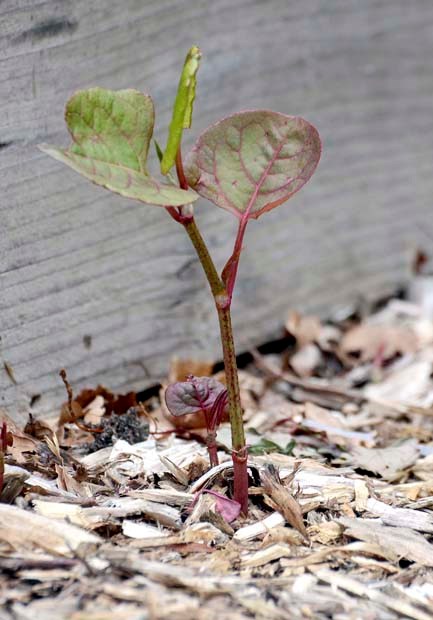The argument goes something like this: Invasive plants displace native plants, damage ecosystems, contribute to the loss of habitat for wildlife and cost the economy millions of dollars.
The argument against invasive plants is, as Timothy Lee Scott puts it, "Full of 'scientific' theories and far-reaching policies based on opinions of 'good' plants verses 'bad' plants, in which the federal government, various corporations, nature-based organizations, and the puritanical public allocates billions of dollars trying to control the wilds of nature."
It's interesting to note that no invasive plants have been eradicated from B.C. despite spending millions of dollars trying.
The Invasive Species Council of B.C. defines invasive plants as: "Any invasive alien plant species that has the potential to pose undesirable or detrimental impacts on humans, animals or ecosystems."
It's also interesting to note that many of the fruits and vegetables we eat are not native to our country. Non-native plants are also used in medical research and for homebased medicine. It's known that many of the native butterflies in California feed and breed on non-native plants found in urban areas.
In my own experience, and that of bee keepers I have spoken to, there are several so-called invasive plants that are beneficial bee-feeding plants, namely Japanese knotweed (Fallopia japonica), which blooms at a time of year when few others do so. I have photographed honey bees, wasps and predatory insects simultaneously feeding on colonies of knotweed blooming in late summer. Those few examples demonstrate the value of non-native plants in society.
The business of controlling invasive plants has become big business around the world as countries spend billions trying to control the spread of exotic plants. The perceived threat of exotic plants is becoming expensive with no substantial outcomes clearly defined or realized. Japanese knotweed for example lives in Vancouver and the Kootenay region and many areas in between. How can it ever be eradicated and at what cost? Native plants are regularly cited as the preferred plant choice to grow in residential gardens because native plants are suited to the environment.
Some of the commonly cited reasons to grow native plants versus exotic species are as follows. Native plants are beautiful - but so are exotic species. Native plants are adapted to our climate - but so are thousands of other exotic plants from differing temperate regions of the world. Due to their adaptation to our environment, native plants are low-maintenance - ornamental grasses are low-maintenance and they are non-native. Native plants have superior wildlife values - tell that to the bear that likes to eat apples. Many exotic plants, like Pyracantha, feed birds red berries in fall. Native plants help regulate climate, prevent erosion and cycle nutrients - but so do all other plants on earth. As you can see from those examples, the argument for native plants is weak and unconvincing.
The biggest obstacle to growing native plants at home is the limited commercial supply. Yes, we can buy a couple of ferns, a native tree or two and a few shrubs but that is all that is available commercially. So do the native plant purists expect everyone to have the same 10 plants in every garden across B.C.? One of the problems in growing a wider range of B.C. native plants is not public acceptance, the problem is that wholesale nurseries have difficulty growing many native plants successfully under containerized plant production systems. Many native plants require specific growing conditions including the presence of mutualistic fungi, bacteria and soil organisms that cannot be economically recreated under containerized production, or in most residential gardens.
Exotic plant species introductions are a reality in this era of a global economy that requires movement far and wide of all manner of commodity. The only logical and effective way to control the spread of exotic plants into our country is to increase inspections at our borders and prevent the problem from occurring in the first place. But that would slow down imports at borders, which means the cost for business goes up and so does the cost for consumers. And we would rather have cheap TVs instead of native plants.
The Global Invasive Species Programme estimates the worldwide cost of controlling invasive species is $1.4 trillion annually.
Much of that money would be better spent on increasing border inspections, developing more stringent trade regulations to stop their spread and researching or developing the potential of exotic species for economic benefit. But in the end, aren't all plants native to earth?
Todd Major is a journeyman horticulturist, garden designer and builder, teacher and organic advocate. [email protected]



